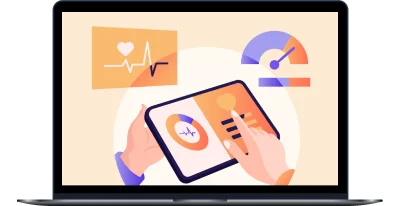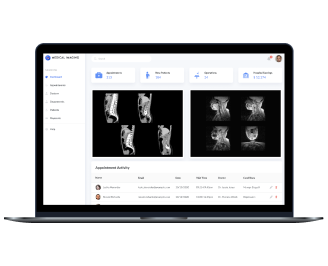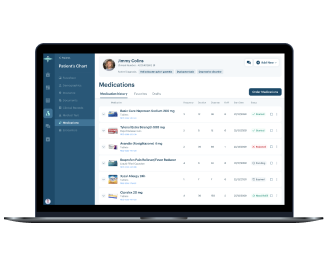Integrating healthcare software with the most popular EHR systems
Learn how we smoothly integrated a patient portal and practice management system with the Cerner, NextGen, and Epic EHR systems for an Accountable Care Organization (ACO).
-
industry
Healthcare
-
Country
USA
-
Team size
10+ specialists
-
Implementation
8 months
About the client
Our client is a medium-sized US-based ACO with an integrated delivery systems model. The organization comprises several healthcare practices and private physicians all over the US.

Business context
To deliver full-service coordinated patient care, our client’s company needed to integrate their patient portal and practice management system with Cerner, NextGen, and Epic EHR software.
- Based on previous experience of successful cooperation with our team, the client chose Yalantis for developing custom integrations.
- This was deemed the most secure and flexible solution since our team could provide on-demand individual support to quickly handle unexpected technical issues.
Solution overview
-
To ensure secure and reliable integration with multiple EHR systems, we had to tackle the following challenges:
- Create the correct patient identification information in several EHR systems when a new user registers in the patient portal
- Establish mechanisms for monitoring data that was changed or updated and for notifying system users about these changes
- Ensure efficient scheduling of doctor appointments, taking into account specifics of different EHR systems including visit type and status, payment processing, and medical insurance
-
We offered an integrated approach that consisted of six steps:
Step 1. Explore EHR system specifics. Each EHR system had its own business and technical specifications and requirements, resulting in differences in how data is exchanged and gathered. For smooth integration, we investigated the documentation of each EHR system and designed a unique strategy for working with each system.
Step 2. Develop EHR-specific business logic. At the architectural level, we had to ensure that each integration is an isolated service. This increased system reliability, as in case any issues occur with a certain integration, other integrations won’t be affected. We also independently tested integrations to make sure they functioned as needed.
Step 3. Implement secure and correct user authentication. To tackle the challenge of correctly identifying users upon registration in the patient portal, we implemented identification by phone number and email address. This way, the system can quickly match registered user data with a user’s unique ID in different EHR systems and pull patient data from all EHR platforms where a particular patient has medical records.
Step 4. Configure FHIR notifications about changed/updated data. To ensure timely system notifications when certain clinical or patient data was changed or updated, we set up a subscription mechanism. We discussed with the client the notification criteria that would trigger this mechanism, such as getting a notification when a patient’s laboratory results are ready. Then, we chose WebSocket as the notification channel that suited our client the most and enabled a smooth subscription flow.
Step 5. Establish secure communication between EHR and client systems. Using diverse HL7 standards, we enabled secure data exchange between EHR systems, the client’s patient portal, and a practice management system. By developing a multi-tenant architecture, we also ensured that the client’s systems could securely and seamlessly communicate with multiple EHR solutions.
Step 6. Compose project documentation for future integrations. To prepare the grounds for integration with more EHR systems, our team elaborated on detailed documentation that describes the general integration process and allows for cost- and time-efficient integration.
Value delivered
Here are the results of our successful cooperation with the client:
Before:
-
A rigid system architecture that didn’t support integration with multiple EHR solutions
-
Clinicians didn’t have access to complete patient information, which was siloed in databases of different EHR systems
-
Patients had to manually enter all of their medical data and medical history when registering in the patient portal
Doctors can now:
-
Multi-tenant architecture that supports seamless interactions with several EHR platforms
-
Automated medical data retrieval from multiple EHR systems upon user registration
-
Clinicians at different healthcare facilities have access to complete patient data and can develop treatment plans faster
Expand your healthcare services and serve more patients
We will securely integrate your software with top EHR systems to deliver coordinated patient care across locations
More projects
-
Cloud-based medical imaging system
A system for synchronizing medical images between medical equipment and an EHR system
-
Medical e-prescription platform
An EHR system enhanced with an e-prescription module
-
EHR integration Healthfully
Integration of a patient management system with multiple EHR solutions


